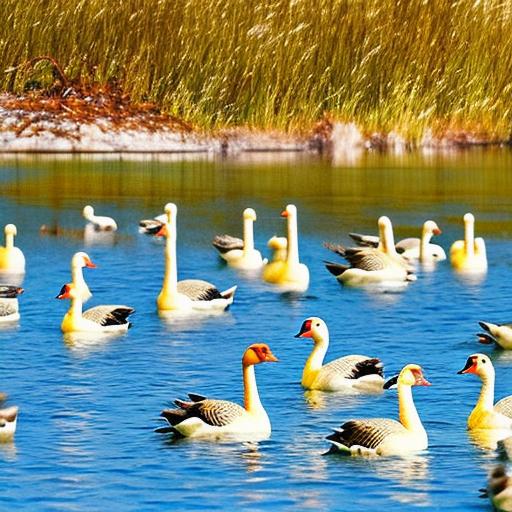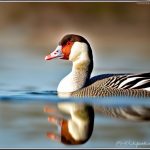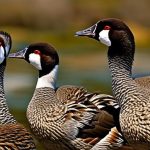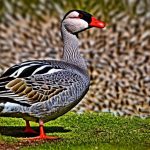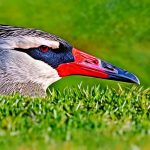Geese are beautiful creatures that are often admired for their graceful flight and elegant appearance. However, when it comes to rafts, geese can cause a lot of damage. Rafts provide a safe and stable platform for geese to rest and feed, which is why they are attracted to them. In this blog post, we will explore the behavior of geese and how to prevent them from landing on rafts.
Key Takeaways
- Geese landing on rafts can cause damage and create unsanitary conditions.
- Understanding geese behavior and attraction to rafts is key to preventing damage.
- Physical barriers, decoys, sound and light deterrents, and natural methods can all be effective in keeping geese off rafts.
- Regular maintenance is important to prevent geese from settling on rafts.
- Working with wildlife management professionals can provide additional strategies for keeping geese off rafts.
Understanding the behavior of geese and why they are attracted to rafts
Geese are attracted to rafts for several reasons. First, rafts provide a safe and stable platform for them to rest and feed. Geese like to be near water, and rafts are often located in or near bodies of water, making them an ideal spot for geese to gather. Additionally, rafts can provide protection from predators, as they are elevated and offer a clear view of the surrounding area.
The negative impact of geese on rafts and how to prevent damage
While geese may seem harmless, they can actually cause a lot of damage to rafts. One of the main issues is the droppings that they leave behind. Geese have a high metabolism, which means they produce a large amount of waste. This waste can be unsightly and unsanitary, making the raft less appealing for human use.
In addition to droppings, geese can also leave behind feathers and other debris that can accumulate on the surface of the raft. Over time, this debris can build up and create a slippery surface that is dangerous for humans to walk on.
Furthermore, geese have sharp beaks and claws that they use to scratch and peck at the surface of the raft. This can cause damage over time, leading to costly repairs or even the need for a new raft.
To prevent damage from geese, there are several strategies that can be employed.
Physical barriers to keep geese off rafts
One effective strategy for keeping geese off rafts is to install physical barriers. Netting or fencing can be used to create a barrier that prevents geese from landing on the raft. These barriers should be at least 3 feet high to be effective, as geese are capable of flying over lower barriers.
It is important to ensure that the netting or fencing is securely fastened to the raft and that there are no gaps or openings that geese can squeeze through. Regular inspections should be conducted to check for any damage or wear and tear that may compromise the effectiveness of the barrier.
Using decoys to deter geese from landing on rafts
Another strategy for deterring geese from landing on rafts is to use decoys. Fake owls or alligators can be placed on or near the raft to create the illusion of a predator. Geese are naturally wary of predators and will avoid areas where they believe there is a threat.
To maintain the effectiveness of decoys, it is important to periodically move them around. Geese can become accustomed to the presence of decoys if they remain in the same location for an extended period of time.
Sound and light deterrents to keep geese away from rafts
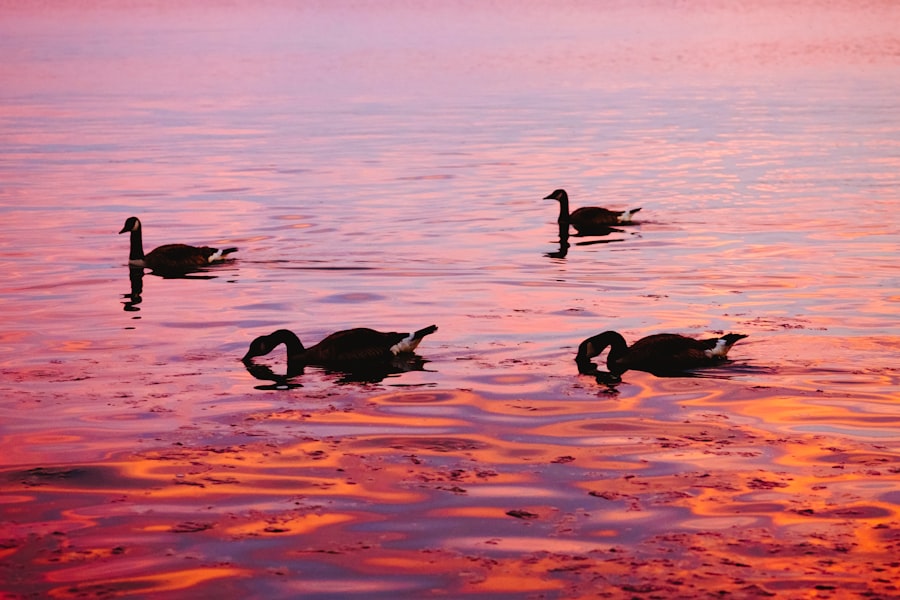
Sound and light deterrents can also be effective in scaring geese away from rafts. Sirens or strobe lights can be used to create a loud noise or bright flashes of light that will startle and scare off geese.
However, it is important to use these deterrents sparingly, as they can be disruptive and may disturb neighbors or other wildlife in the area. It is also important to consider any local regulations or restrictions regarding the use of sound and light deterrents.
Natural methods to discourage geese from landing on rafts
There are also natural methods that can be used to discourage geese from landing on rafts. Planting tall grasses or shrubs around the perimeter of the raft can create a physical barrier that geese are less likely to cross. Geese prefer open spaces where they have a clear view of their surroundings, so creating a more enclosed and obstructed area can deter them from landing.
Additionally, geese dislike the smell of certain plants, such as lavender or peppermint. Planting these types of plants near the raft can create a scent barrier that geese will find unpleasant and avoid.
The importance of regular maintenance to prevent geese from settling on rafts
Regular cleaning and maintenance of rafts is essential for preventing geese from settling in. Removing debris and keeping the surface clean can make the raft less attractive to geese. It is also important to repair any damage or wear and tear on the raft promptly, as geese are more likely to land on a damaged or deteriorating surface.
Working with wildlife management professionals to keep geese off rafts
If all else fails, it may be necessary to seek assistance from wildlife management professionals. These professionals can provide advice and assistance in keeping geese off rafts. They may be able to recommend additional strategies or techniques that are specific to your location or situation.
In some cases, it may be necessary to remove geese from the area entirely. Wildlife management professionals can help with humane removal methods that comply with local regulations and guidelines.
Conclusion and summary of effective strategies to keep geese off rafts
In conclusion, geese can cause a lot of damage to rafts if they are not properly managed. However, there are many effective strategies for keeping geese off rafts, including physical barriers, decoys, sound and light deterrents, natural methods, and regular maintenance.
It is important to choose the strategies that are most appropriate for your specific situation and to regularly assess their effectiveness. Working with wildlife management professionals can also be helpful in preventing geese from causing damage to rafts. By implementing these strategies and taking proactive measures, you can enjoy your raft without the hassle and damage caused by geese.
If you’re looking for more tips on how to protect your raft from geese, you might also be interested in this article on Poultry Wizard about converting a shed into a chicken coop. Converting a shed can provide a secure and enclosed space for your chickens, which can help deter geese from accessing your raft. Check out the article here for more information and ideas on creating a goose-free environment for your raft.
FAQs
What are some effective ways to keep geese off a raft?
There are several ways to keep geese off a raft, including using decoys, installing bird netting, using motion-activated sprinklers, and applying goose repellent.
What are decoys and how do they work?
Decoys are fake geese that are placed on or near the raft to deter real geese from landing. They work by tricking the geese into thinking that the area is already occupied by other geese, which makes them less likely to land.
What is bird netting and how does it work?
Bird netting is a type of mesh material that is installed over the raft to prevent geese from landing. It works by creating a physical barrier that the geese cannot penetrate.
What are motion-activated sprinklers and how do they work?
Motion-activated sprinklers are devices that spray water when they detect movement. They work by scaring off geese with a sudden burst of water, which makes them less likely to land on the raft.
What is goose repellent and how does it work?
Goose repellent is a type of chemical spray that is applied to the raft to deter geese from landing. It works by emitting a scent that is unpleasant to geese, which makes them less likely to land on the raft.
Meet Walter, the feathered-friend fanatic of Florida! Nestled in the sunshine state, Walter struts through life with his feathered companions, clucking his way to happiness. With a coop that’s fancier than a five-star hotel, he’s the Don Juan of the chicken world. When he’s not teaching his hens to do the cha-cha, you’ll find him in a heated debate with his prized rooster, Sir Clucks-a-Lot. Walter’s poultry passion is no yolk; he’s the sunny-side-up guy you never knew you needed in your flock of friends!

